Cambodia: Helping children to stay healthy from the kitchen to the classroom
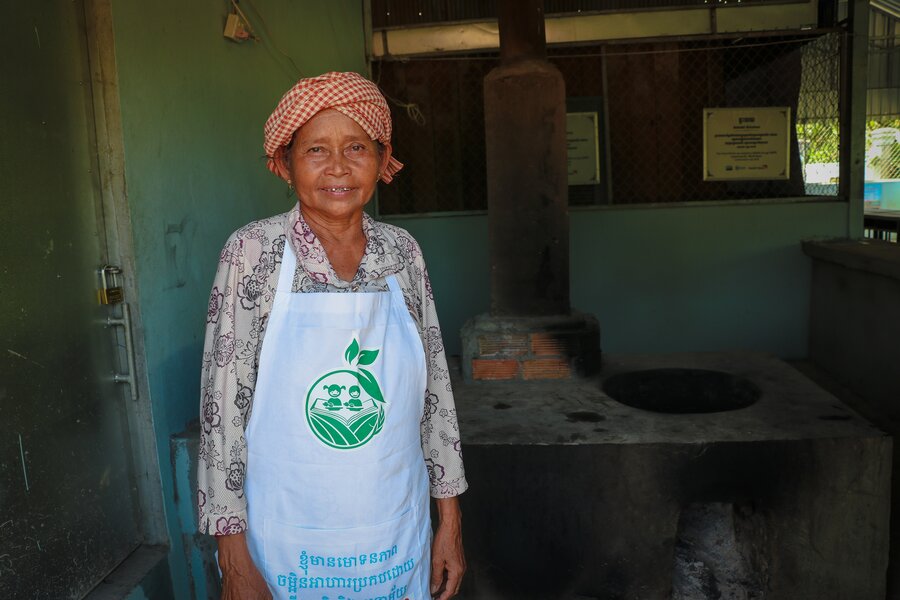
As the clamor of students waiting to collect their school meals starts to quieten down, Im Lone, a cook at the Samrong Primary school in Kampong Thom province, takes one of her first breaks for the day.
For the last 10 years, she has prepared healthy meals for hundreds of students five days per week, supported by the World Food Programme (WFP). Like all cooks, nothing is more important to her than having a good kitchen.
In 2021 while the school was closed for COVID-19, WFP with support from the United States Department of Agriculture (USDA) built a new kitchen, dining area and handwashing facilities. This was to ensure that students, teachers, and cooks can practice good hygiene by washing their hands before preparing, serving, and eating meals.
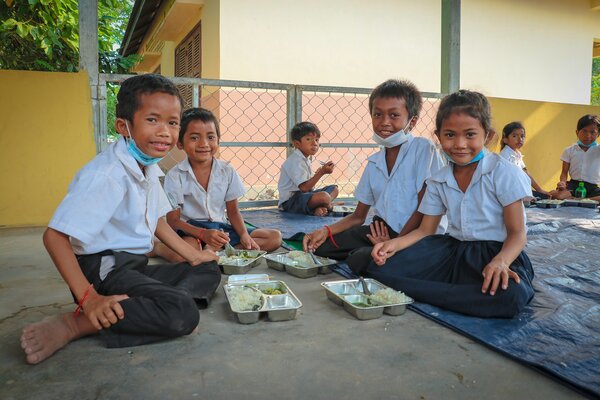
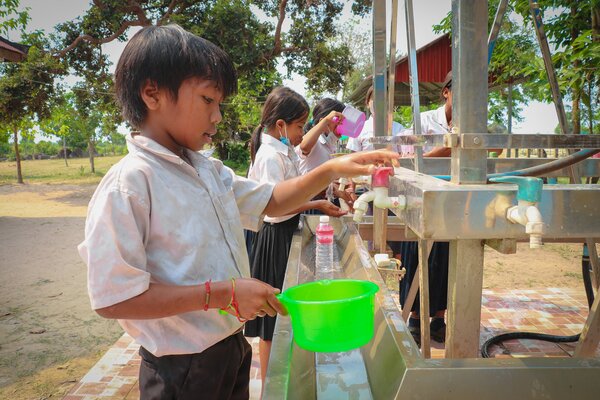
“I’m so happy with our new cooking facilities,” says Im Lone. “They help me to make sure everything that goes out of this kitchen is clean. The old kitchen wasn’t very well-designed, so dust got into everything. It was hard to keep clean, but that’s all changed now.”
After preparing school meals for a decade, Im Lone has come to appreciate of the importance of having a clean kitchen and a full stomach. “Freshness and safety are both very important. They help students stay healthy and avoid preventable diseases.”
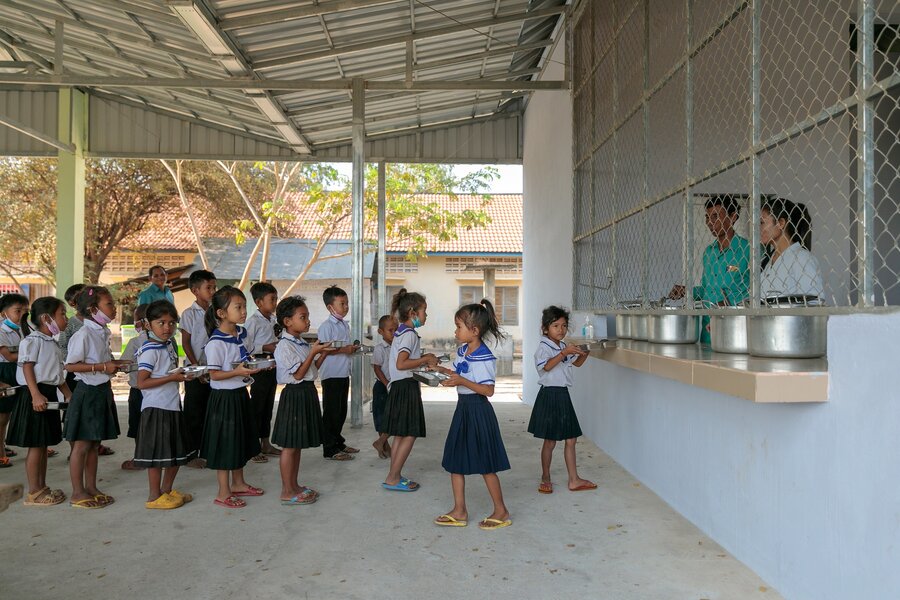
Consumption of unsafe food and water is a leading cause of diarrhea and infection in Cambodian children. It can contribute to malnutrition by damaging the body’s ability to absorb important nutrients.
Samrong Primary School’s Director, Choeun Bunchhen is doing everything possible to keep his students healthy. He says he has seen many positive changes at Samrong Primary during his tenure, but says improvements to the school's hygiene standards has been one of the most significant developments.
Alongside school infrastructure upgrades, WFP has also provided food safety and hygiene trainings to key school personnel including school directors, storekeepers, and cooks. These trainings include learning about food storage, handling of fresh produce, safe food preparations practices, and basic good hygiene and sanitation.
“The trainings provided by WFP and the construction of the new kitchen and eating hall were very important to improve our knowledge about food hygiene and safety. This knowledge keeps children healthy and attentive in class,” says Bunchhen.
After working at the school for many years, he has seen the impact that school meals have on children and their families.
“Children actually come to school more when safe and nutritious food is made available through the school’s feeding programme as it helps ease the burden of lower-income parents. For this reason, our school has lower absence and dropout rates,” says Bunchhen. "And this also eases the burden on poorer parents.”
Veung Chatt, a local smallholder farmer is determined to ensure that all school children have the opportunity to understand that safe and healthy food contributes to better educational outcomes.
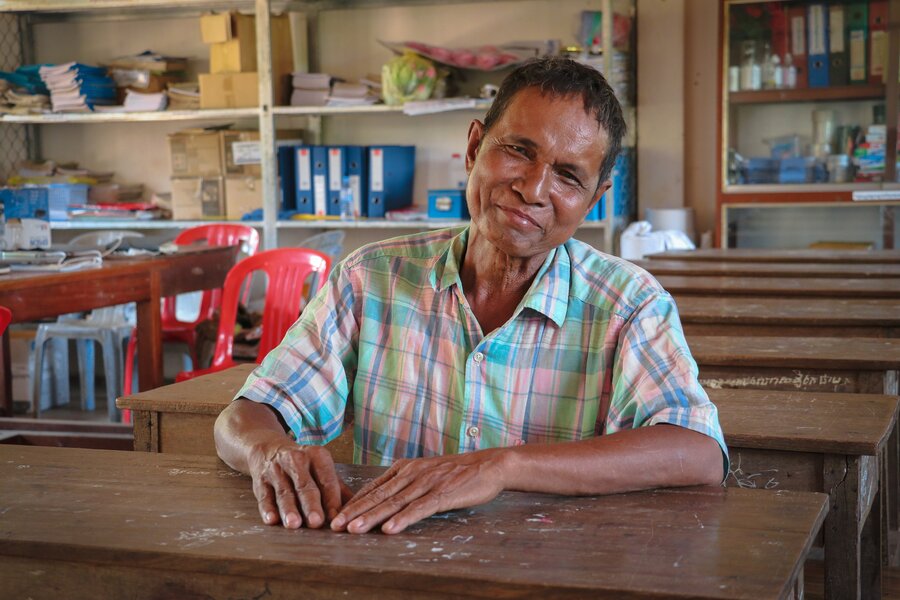
“I received very little education. As a result of civil war when I was a child there was no support for children and no good facilities in school for children, so I had to drop out when I was in grade two. Now I want to help children in my community jump over the hurdles and get the kind of education I didn’t have,” he explains.
“Safe and nutritious meals are really important and significantly helps with growth and learning. While this might be a remote area, our children still deserve good food and the chance to follow learn about good hygiene practices.”
Parents have also noticed these improvements. Set Bonai, a mother of 11 year old Chep Sinet, who studies in grade five at Samrong Primary School, is delighted to see the changes implemented over the last year.
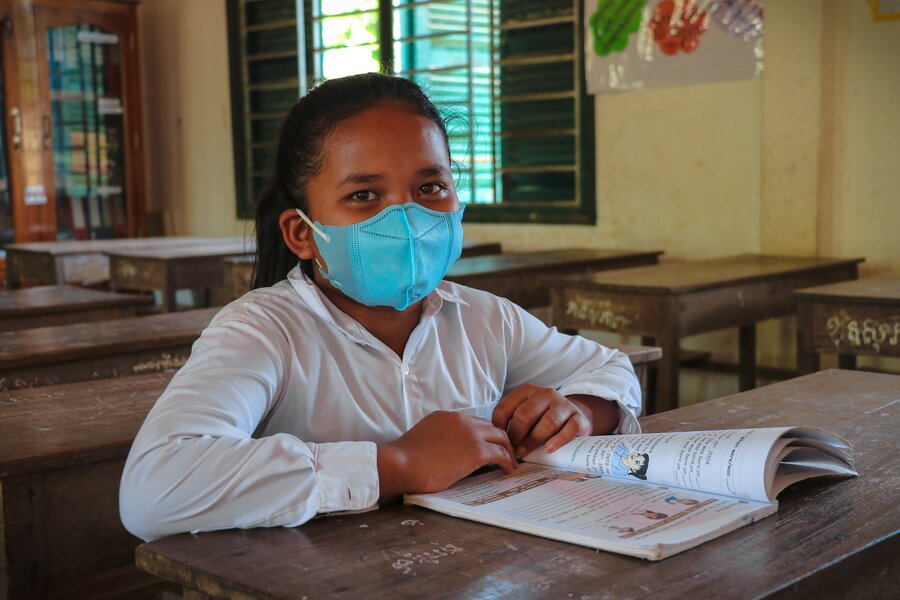
“These excellent and clean facilities are benefitting all children at the school. Especially, the love the kitchen, and I’m very glad to see the new handwashing area which will allow Sinet to wash her hands constantly. This makes me feel safer sending my daughter back to school, knowing there is less chance she’ll get sick,” says Bonai.
Bonai is also glad that her daughter is getting a safe and nutritious school meal every day because she believes that this can help shape her future. “I want all my children to get a good education and have a good chance at a better job. That’s what all parents want for their children. And good nutrition is important because when children are well-fed, they’re healthy, and when they’re healthy they learn well.”
“I want to be a teacher when I grow up,” says Sinet. "To make this dream come true, I need to study hard and eat healthily. I will do my best!”
WFP and USDA are working together to helping Sinet and children across Cambodia to boost their nutrition and have access to safe and healthy school meals.
Read more about WFP's work in Cambodia


